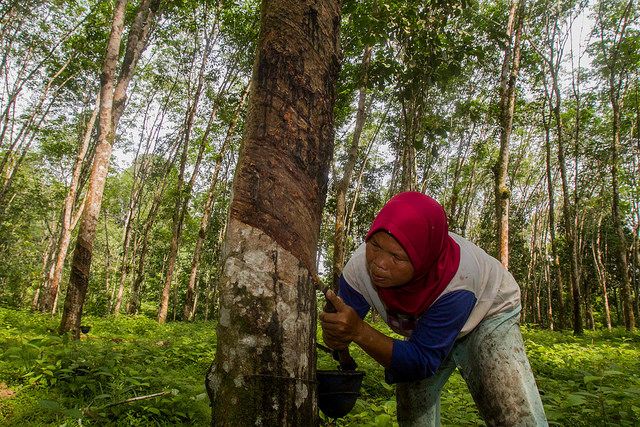By Robert Winterbottom
This is the first installment of WRI’s blog series, New Perspectives on Restoration. The series aims to share WRI’s views on restoration, dispel myths, and explore restoration opportunities throughout the world.
Almost half of the world’s original forests have been cleared or degraded. So naturally, most people think of the “forest restoration” movement as an effort to re-plant these lost trees.
But it’s time to see restoration as more than just the trees.
Restoration is really about improving landscapes throughout the world that are deforested, degraded, or underutilized. Boosting the productivity of these landscapes helps take pressure off the world’s remaining forests while also providing a host of tangible benefits—from food security to clean water to carbon sequestration.

3 Approaches to Restoration
Restoration can involve numerous activities that improve the productivity of landscapes. Three approaches illustrate the spectrum of restoration initiatives currently underway:
1) Forest Restoration: Sometimes restoration does involve replacing lost trees. This can include tree-planting as well as protecting land from uses that led to deforestation and degradation in the first place. It can also involve conservation to ensure that previously forested land has the time to naturally regenerate, thereby restoring ecosystem services like soil fertility, water filtration, and rich biodiversity.
A good example of this approach can be found in South Korea. By planting fast-growing trees, establishing fuel-wood forests, conserving remaining forests, and other efforts, the country increased its forest cover from 35 to 64 percent of total land area between 1953 and 2007.

Credit: Korean Forest Service/ FAO
2) Agroforestry: Another approach involves improving productivity of rural landscapes by integrating trees on farms. This can involve both increasing the number of trees across the landscape and preventing land degradation through improved agricultural practices. For example, better soil and water management practices—such as the use of improved “planting pits” and building erosion control structures—enhances agricultural productivity. This type of restoration could also include the widespread adoption of resource management practices that limit over-grazing, bush fires, logging, or harvesting of trees for firewood. It can also include protecting naturally occurring shrubs and trees on farms in order to boost crop yields, a concept known as “re-greening.”
This type of restoration is evident in Africa’s drylands. Through re-greening, farmers operating on 5 million hectares throughout Niger added roughly 200 million on-farm trees over the past 20 years.

3) Boosting Agricultural Productivity on Degraded Lands: Another approach involves restoring degraded lands to agricultural productivity, which increases food production and alleviates pressures on existing forests. For example, in close consultation with local communities, restoration plans can sustainably intensify the production of annual crops, tree crops, fruit tree orchards, and other perennials. In other cases, communities can site agricultural operations on deforested and degraded land rather than clear-cutting forest. This sort of “climate-smart agriculture,”along with agroforestry, can help reduce emissions while also preparing rural communities for the effects of climate change.
For example, Indonesia is experimenting with the idea of “land swaps,” where agricultural companies shift their operations from forested to already-degraded land. This reduces the need to clear-cut forest while improving agricultural outputs, a potential “win-win” scenario.
Restoration Provides a Suite of Benefits
Just as restoration is about more than just trees, its benefits extend way beyond forests.
Successful restoration generates a wide range of benefits–not only forest quantity and quality, but enhanced food security, improved air and water quality, climate change resilience, job creation, and more. Restoration objectives can be targeted to focus on achieving these various benefits, which can help secure greater investment and full community participation.
For example:
-
Cropland restoration across the West African Sahel and Ethiopia’s Tigray region is improving food and water security. According to a report from the International Food Policy Research Institute (IFPRI), new agroforestry systems on five million hectares throughout Niger increased annual agricultural production by about 500,000 tons.
-
Also in Africa’s drylands, landscape restoration practices like rainfall harvesting and re-greening have helped replenish water resources and increase crop yields. Farmers in Burkina Faso have doubled grain yieldsusing multiple water-harvesting techniques, including stone bunds and planting pits. Experiments in Zambia showed that maize yields increased by 88 to 190 percent when grown in an agroforestry system under the canopies of Faiderbia albida trees. Local communities living in restored landscapes also benefit from increased resilience to climate change. For example, increased tree cover not only helps to sequester carbon and mitigate climate change, but provides rural communities with stocks of wood that can be sold to boost incomes and offset reduced grain harvests during periods of drought.
-
In South Korea, China’s Loess Plateau, and other areas, restoration has helped create jobs, increase incomes for local communities, and reduce poverty. Increased tree cover in these regions also provides a suite of environmental benefits such as landslide prevention, water storage enhancement, reduced flooding, and enhanced recreational opportunities. Following the successful restoration of rural landscapes in China’s Loess Plateau, the World Bank reports that more than 2.5 million people in four of China’s poorest provinces – Shanxi, Shaanxi Gansu and Inner Mongolia Autonomous Region – were lifted out of poverty.
Building a Restoration Movement
We need a global movement to restore deforested and degraded lands back to productivity in ways that revitalize these landscapes for people and the planet. To further this goal, WRI is actively contributing to the Global Partnership on Forest and Landscape Restoration, a proactive network of organizations led by IUCN that promotes restoration and builds capacity around the world. Together, partners are promoting the Bonn Challenge, an ambitious effort to restore 150 million hectares of deforested and degraded land by 2020.
In the coming weeks and months, we’ll be exploring more facts and myths about restoration. We’ll also highlight tools and approaches that can support, accelerate, and scale up restoration around the world. And in doing so, we think it’s a good idea to remember that restoration is about more than just trees!
Read the original Blog post here


